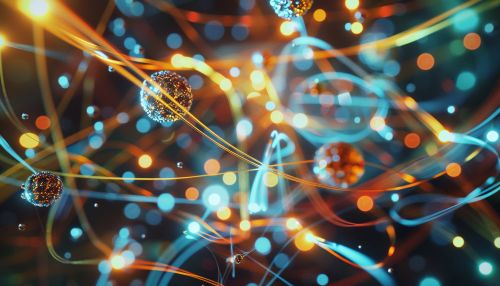Decoherence Theory
Introduction
Decoherence theory is a branch of quantum mechanics that studies the interaction of a quantum system with its environment. This interaction leads to the loss of quantum behavior of the system, a process known as quantum decoherence. The theory provides a framework for understanding the transition from quantum to classical behavior, and is fundamental to the study of quantum information and quantum computation.
Quantum Systems and Environment
A quantum system is a physical system that obeys the laws of quantum mechanics. These systems exhibit properties such as superposition and entanglement, which are not observed in classical systems. The environment of a quantum system includes everything else in the universe that is not part of the system. This could be other quantum systems, classical systems, or even the vacuum of empty space. The interaction of a quantum system with its environment can lead to decoherence, which is the loss of quantum behavior.


Quantum Decoherence
Quantum decoherence is the process by which a quantum system loses its quantum behavior and begins to behave classically. This occurs when the system interacts with its environment, causing the quantum state of the system to become entangled with the states of the environment. As a result, the system's quantum state appears to collapse into a classical state when observed.
Decoherence Theory
Decoherence theory provides a mathematical and physical framework for understanding quantum decoherence. It describes how the interaction of a quantum system with its environment leads to the loss of quantum behavior. The theory is based on the principles of quantum mechanics, and uses mathematical tools such as density matrices and trace operations to model the decoherence process.
Mathematical Description
The mathematical description of decoherence theory involves the use of density matrices and trace operations. A density matrix is a mathematical object that describes the state of a quantum system. Trace operations are mathematical operations that are used to calculate the probability of different outcomes in a quantum system.
Applications of Decoherence Theory
Decoherence theory has several important applications in the field of quantum information and quantum computation. It provides a framework for understanding the limitations of quantum computers, and for designing quantum error correction codes. The theory is also used in the study of quantum communication and quantum cryptography.
Challenges and Future Directions
Despite its successes, decoherence theory also faces several challenges. One of the main challenges is to develop a deeper understanding of the decoherence process, and to find ways to control and minimize decoherence in quantum systems. Future directions in decoherence theory include the study of decoherence in more complex quantum systems, and the development of new techniques for controlling decoherence.
